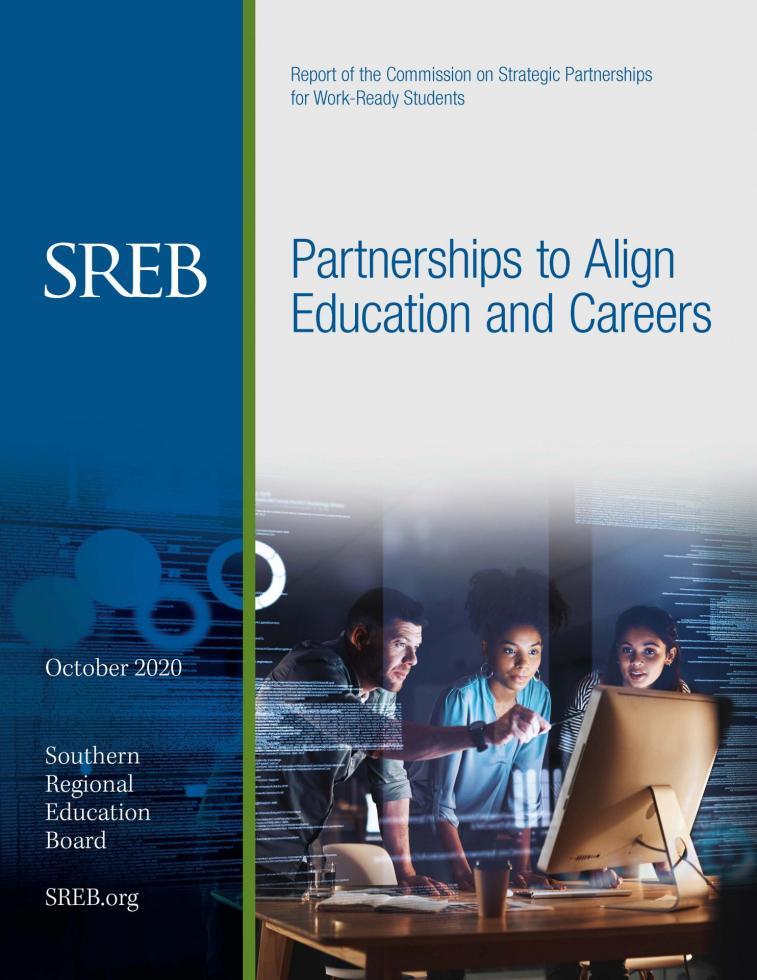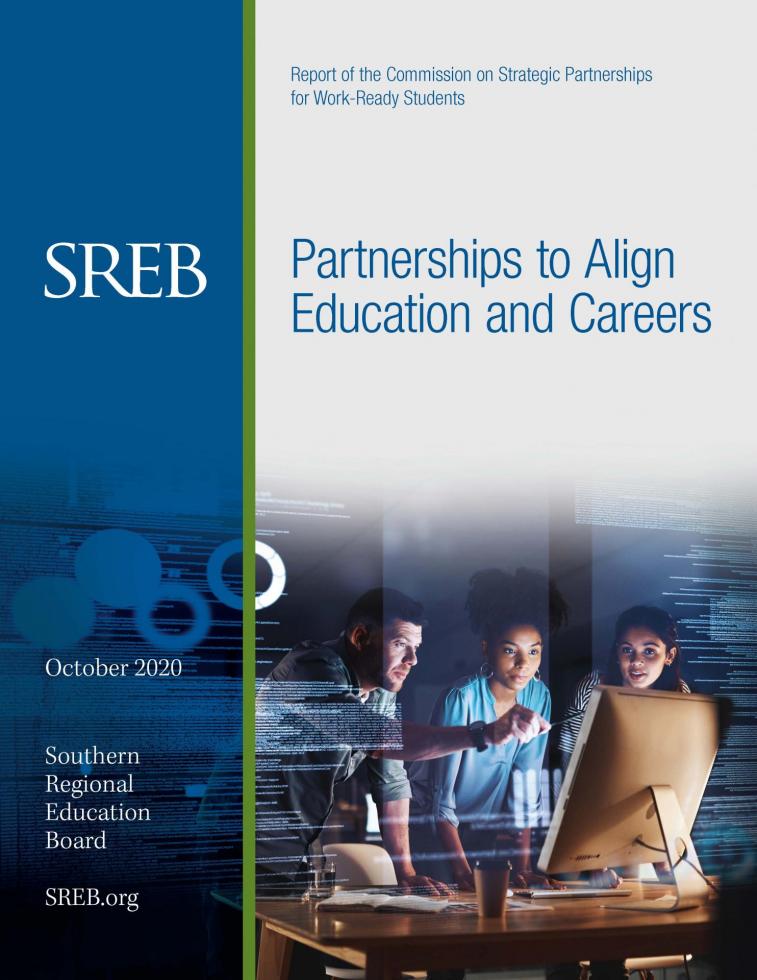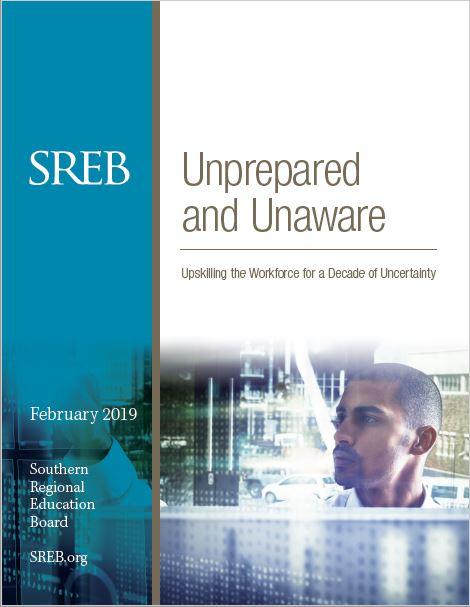States should expand business-education partnerships, connect more students with high-demand careers
States need to make partnerships among employers and schools far more routine so that more students can learn about and gain experience in high-wage careers, a new Southern Regional Education Board report shows.
In Partnerships to Align Education and Careers, state policymakers and business leaders who served on the SREB Commission on Strategic Partnerships for Work-Ready Students outline how states should prioritize resources and provide stronger leadership to help more students pursue high-wage jobs in high-demand fields.
“Too often, students’ paths to college and the workplace are left to chance,” said SREB President Stephen L. Pruitt. “Instead, states can take specific steps to help more students find their way into a better future.”
The commission — state legislators, education leaders and industry representatives from SREB states — started work in late 2018 to determine how work-based learning could prepare more students for their eventual careers.
Work-based learning refers to structured ways that high school and college students can gain experience and training — from job shadowing with professionals to more formal internships and apprenticeships that can lead directly to high-wage jobs.
Twenty-one million adults in the 16 SREB states could be left behind in the coming years as a more automated workplace requires higher levels of education and training, warned SREB’s 2019 report on future workforce needs, Unprepared and Unaware: Upskilling the Workforce for a Decade of Uncertainty.
Meanwhile, many of today’s students are not prepared to transition successfully from high school and college into the workplace, the new SREB report says.
The report also highlights breakthrough solutions in several states. Among the report’s recommendations for states, districts and schools:
- Engage business leaders in strategic industry-education partnerships. When schools and colleges partner with industries of strategic importance in their states and communities, more students can prepare for in-demand jobs and meet workforce needs. These partnerships can also introduce students to careers through internships and other quality work-based learning experiences.
- Develop more career pathways in critical industry sectors as identified by the strategic regional business partnerships.
- Adopt a business-friendly policy for work-based learning. States should encourage the expansion of work-based learning by making it part of high school graduation requirements and school accountability. States should also provide incentives for employers that offer paid work-based learning positions.
- Ease potential liability for businesses, industry and nonprofit or government employers, removing any barrier for students to experience work-based learning.
- Inform teachers, school counselors and other educators about work-based learning, its benefits and other potential opportunities for students, so that educators and the community can support students’ pursuits.
- Promote simulated workplace and other virtual solutions for students in rural and hard-to-serve communities.
- Strengthen statewide coordination through a state agency or cabinet-level governor’s council that can oversee industry certifications, dual-credit courses and “stackable” credentials, which build on one another and help students avoid extra cost and time as they continue their education and training.
- Promote dual-enrollment programs to help more high school students take courses that lead directly to degrees and industry certifications.
Contact SREB Communications for more details and interviews with our experts.
More from SREB: Our 16 state-by-state workforce data profiles (to be updated soon with new data on the impact of COVID-19) and 16 state progress reports showing long-term trends and data for all levels of education.
Media Contact: Alan Richard, cell (202) 641-1300 or (404) 879-5528




